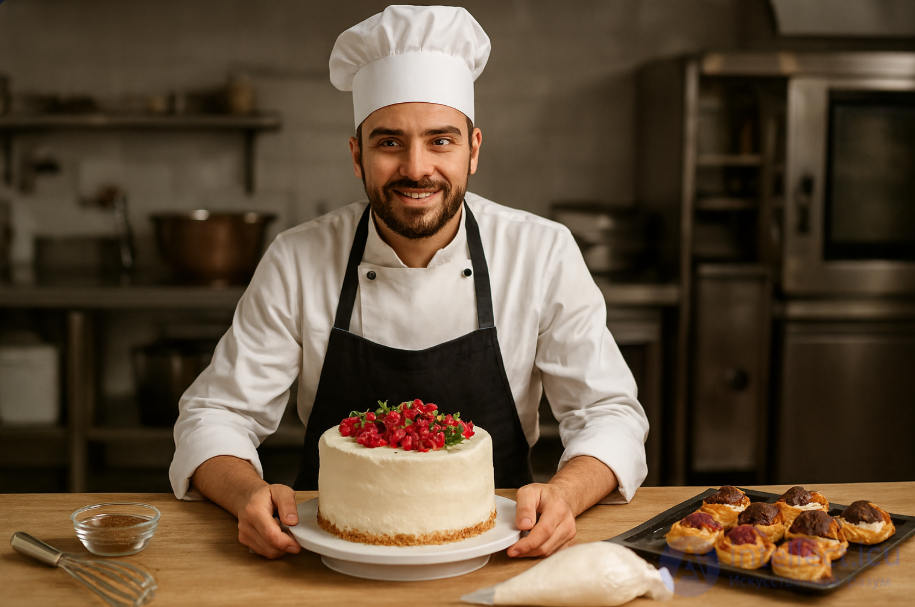Lecture
1. General characteristics of the profession
Prepares pastry at confectioneries and specialized bakery shops. Prepares various types of dough, fillings, creams for a given recipe. Bakes and decorates products. Checks the weight of finished products. Uses hand tools, mechanical and electromechanical equipment.

2. Requirements for the individual characteristics of a specialist
Thin taste and olfactory sensitivity, subtle color distinction, good visual-motor coordination (at the level of hand movements) are necessary for activity.
3. Medical contraindications
The work is not recommended for people who have allergic reactions to food and diseases: respiratory organs (bronchial asthma, chronic pneumonia, etc.); cardiovascular system (hypertension, heart failure, etc.); kidneys and urinary tract (nephritis, renal failure, etc.); musculoskeletal, limiting the mobility of the hands; nervous system (meningitis, myelitis, etc.); organs of vision (a significant decrease in visual acuity and color discrimination); skin localized on the hands (dermitis, eczema, etc.).
4. Requirements for training
A confectioner must know: the range of products; sanitary and hygienic standards of confectionery production; types of raw materials and its properties; recipe and mode of preparation of confectionery; device and rules for the use of special equipment. He should be able to process the raw materials in accordance with its properties, prepare and finish different types of confectionery.
5. Related professions
Bartender, manufacturer of food semi-finished products, culinary fish and seafood dishes, baker, cook.
Comments
To leave a comment
Professions and specialties
Terms: Professions and specialties